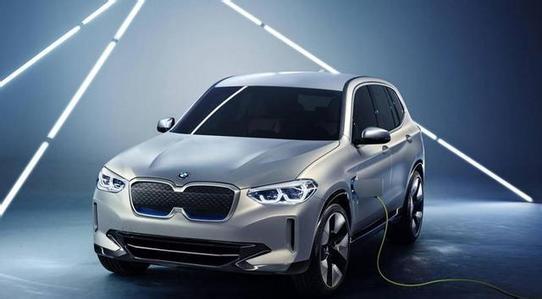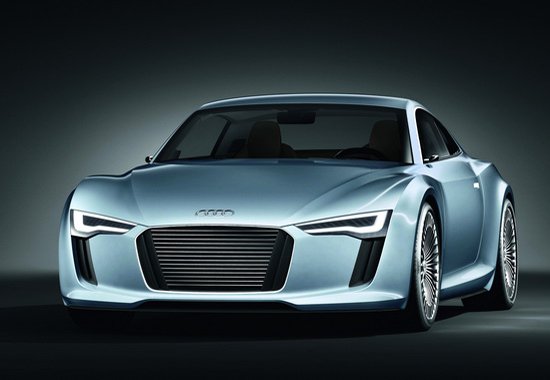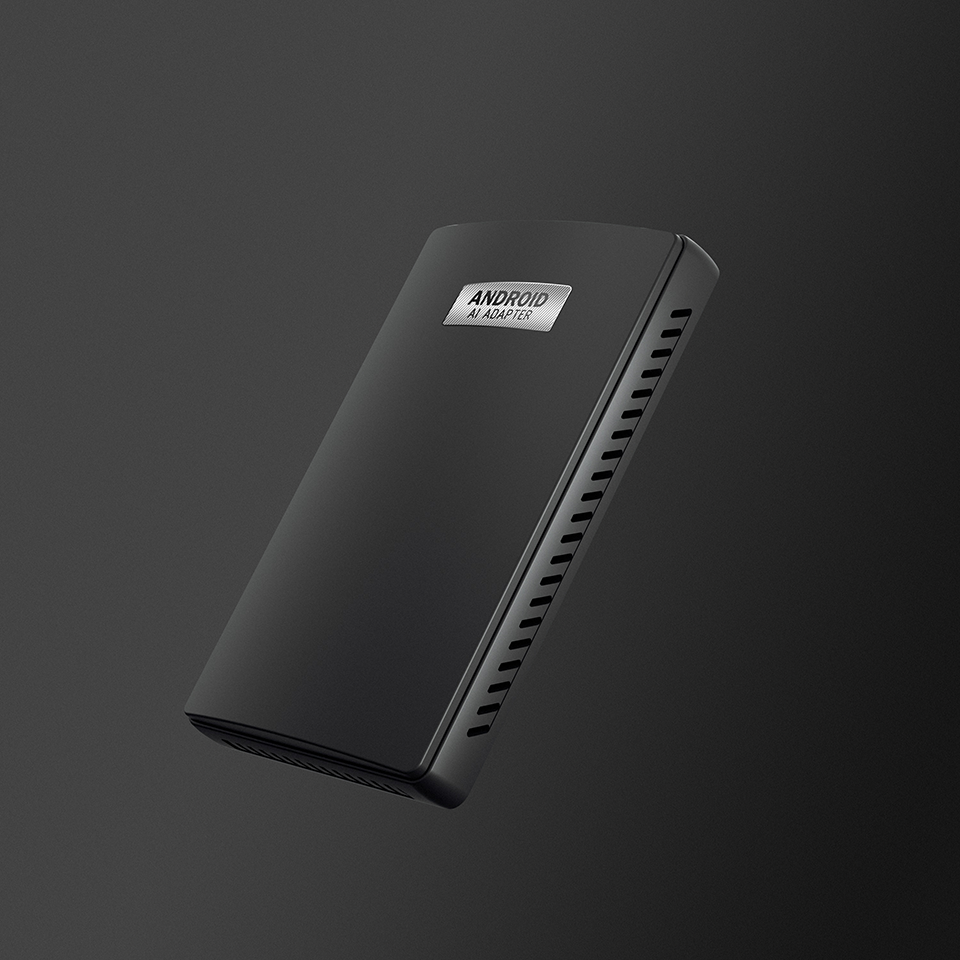In any case, this is just a superficial manifestation of the early appearance of forward-looking technology.
The weight of the 2019 Shanghai auto show is basically over, and we can finally come to a conclusion: 2021-2022 is the big year to define major automakers'L3-class auto-drive models.
From last year's blue-and-white L2-level autopilot aid system (ADAS),) at the Beijing Auto Show to today's "mass production L3-level autopilot" upgrade has become a key word for all the exhibitors. The next year played almost a cliffs-like node throughout the process of technology development.
At the auto show, a special open show of muscle, the big manufacturers put up various positions to meet the war. Among them, Che Yun bacteria selected 10 players with high-profile details, trying to map out a clear map route for all of you.
New car-building force
Young people always seem more restless. The hard work of new cars in L3-class autopilot showed up before the Shanghai auto show officially began.
Xiaopeng automobile

As early in April, Xiaopeng released a preview of a four-door car codenamed E28, and later officially released its first car, the Xiaopeng P7, at the Shanghai Motor Show. Just from the appearance design published at that time, we can see that Xiaopeng wants to mark Tesla Model 3. In terms of vehicle and mileage, etc.
Even the P7 autopilot configuration is fully targeted at this industry benchmarking product. It is reported that Xiaopeng P7 will be equipped with G3 intelligent system, the choice of Nvidia DRIVE Xavier autopilot chip and Snapdragon 820A processor. According to officials, vehicles can achieve high-level intelligent driving as well as high perception between cars and people, between cars and cars, and between cars and the environment.
In other words, at the hardware level, the model fully supports L3-class autopilot. This function is based on the domestic road environment research and development, and will be gradually landed through the vehicle OTA technology. So far Xiaopeng has not announced the specific size and power parameters of the new car, but its intelligent configuration level alone has reserved a position in the next intelligent war.
Weima car

Interestingly, Weima also regards Tesla as the imaginary enemy of self-driving. Three days before the Shanghai auto show officially opened, the company released a version 2.0 Weima EX5, standard with the Living Pilot Intelligence Bank Auxiliary system, also dubbed the "low-end version of Tesla" by industry insiders.
Before the release of the new product, Che Yun also had the privilege to experience a Waima Living Pilot intelligent assistant system in advance, and tested the system in total four advanced driving assistance functions, eight safety alert auxiliary functions.
Notably, the Waima EX6 Limited, which will be launched between 2019 and 2020, is on display at the Shanghai Auto Show. Vibrio observed on-site changes in sensors compared to the current mass-production models, which in some ways heralded Waima's ambition to upgrade its autopilot capabilities.
At the same time, the young company is also developing an intelligent concept cockpit for L3 and above autopilot scenarios, which is scheduled to be available in 2020.
This series of measures appears to be corroborating Wilma's earlier flag. In mid-January, Weima and Baidu Apollo entered into a long-term strategic partnership on self-driving, which led to the establishment of the Wiema-Apollo Joint Technology Research and Development Center for Intelligent vehicles. The two sides will jointly develop L3 and L4 autopilot solutions, which will officially begin production in 2021.
Zero run car

In many new car-building forces, zero race always takes independent research and development of intelligent technology as the center of competition. Backed by security giant Dahua, the company even plans to apply its AI autopilot chip, Lingxin 01, to mass-production models.
In the long run, the advantages of self-research chips are obvious. After completing the chip layer capability, zero race will have the ability to cover the "autonomous driving perception hardware" embedded processing platform autopilot executive agency ", that is, to make self-driving system sense, decision-making," the self-driving ability will be fully covered by the "autonomous driving perception hardware, automatic driving embedded processing platform". Executive layer.
This was quickly reflected in the mass production level. This year's auto show, zero run brought a mass production of the SUV model, the new product in early April at the core media communications conference first showed up. It is reported that the new car will be equipped with the Leap Pilot autopilot system, after the launch of L3-level autopilot, follow-up can be upgraded through the OTA to the L4 level.
self-owned brand
Compared to the above "young boy", the independent brand in the high-end autonomous driving on the movement seems a lot more stable. At the Shanghai Auto Show, they actually announced the auto-drive model and, without exception, wore the "first L3-class autopilot" hat.
Guangzhou Auto New Energy

At the Shanghai Auto Show, GAC New Energy became the fastest self-driving brand with a brand-new flagship model, the Aion LX,. It is reported that this is a luxury intelligent supercar SUV, and the world's first L3-class autopilot mass production SUV model.
The Adigo autopilot system on the vehicle enables Aion LX to possess L3 level autopilot capability and can realize the demonstration operation of L4 class autopilot in closed fences such as expressways. Also on board is the Aion S, which produces L2-level autonomous driving in mass production and enables advanced auxiliary driving in fixed lanes.
It can be said that these two models are the key products of SAIC's new energy self-driving. As a result, the company has officially become the first domestic production L2 and L3 class self-driving vehicles own brand.
SAIC Group

SAIC Roewe series models have always been considered to be the centralized embodiment of SAIC's intelligence. At this year's Shanghai Auto Show, SAIC Roewe also met expectations, officially released its first L3-class auto-driving level of mass production, Roewe MARVEL X Pro version.
It is understood that the product can complete autonomous parking and auto-pick-up functions in low-speed unmanned driving. "self-driving regulations can be sold as soon as they are introduced, and the system will soon be applied to mass-produced vehicles," the official said directly.
In addition, SAIC Roewe also has two major actions in the aspect of intelligent net connection: first, release "the world's first 5G zero screen intelligent cockpit" Roewe Vision-i concept car, will use 5G technology to build the vehicle intelligent terminal carrier; Second, announced to join hands with China Mobile, Huawei, Shanghai International Automobile City to launch the "5G Intelligent Network Association Automotive demonstration Zone," to create the country's first "intelligent transportation" demonstration zone.
North-steam new energy
In contrast to the two friends, North-steam new energy is still conservative in auto-driving, and this time has only released a "IMC Smart Module Standard Architecture" through the ARCFOX brand.
According to the introduction, the architecture has 42 core modules,127 functional modules, and the world's first platform for business with 5G technology. By means of the modular chassis and body structure, the standard full-weather battery pack, etc., it can meet the full coverage of the model from A0 to C, and the range of the continuous driving range of 500-700km of the full-system type. Based on this platform, ARCFOX plans to launch six products by 2021, including the ARCFOX-GT track, the ARCFOX-GT street version, and the four high-performance smart cars.
In the aspect of intelligent configuration, IMC platform has a chip with calculation power of up to 352 trillion times per second, and it can realize L3-L4 and above automatic driving technology in theory. And this time appeared in front of the ARCFOX ECF Concept concept car is the group's closest to fully self-driving products. Officials say the medium-sized SUV will have L3-class autopilot after mass delivery.
International OEMS
Based on the international market, the multinational factories headed by BBA appear to be unhurried in the matter of autopilot, still clinging to the technical route of the development from L2 to L3 step by step. At a time of certainty, the centenarians have even turned their attention to small details of future driving space.
Benz

At the Shanghai Auto Show, Mercedes-Benz announced that a new generation of S-Class models will be introduced into L3-level autopilot technology for the first time in 2020, and vowed to make sure that at the Shanghai Auto Show, Mercedes-Benz announced that it would introduce L3-level autopilot technology for the first time in 2020. At that time, the company will be the first in the same class of models to introduce this leading technology car maker. On the other hand, the new model may allow the driver to let go of the car completely and leave the road for a short period of time. Vehicles can also automatically handle road steering, start-stop and so on in highway or peristaltic urban traffic flow.
Beyond that, the carmaker has not made a big deal about self-driving. Only in the dialogue with Daimler AG board member, responsible for group R & D and Mercedes-Benz R & D Conlinson, can its self-driving R & D team and progress see one or two:
"We adopt a two-pronged, parallel strategy in autonomous driving.
Mercedes-Benz currently has hundreds of internal drivers behind L3, the vast majority of road tests have been done in Germany, and some tests have been conducted in the United States and China. Road testing of this level of autopilot technology will be significantly increased in China in the future.
At the same time, we are also working on the L4, L5 autopilot program, such as the unmanned barge project in partnership with Bosch, with a joint team of about 500 people. We will share further in the future on how the plan will be tested in the Chinese market in the future. "
BMW

As one of the German luxury troika, BMW has been actively building its first electric autopilot, the iNext., as early as 2016. "BMW will launch a self-driving car that meets the SAE Level 5 standard definition in 2021," said Elmar Frickenstein, senior vice president of BMW's self-driving program, who announced the timing of the company's auto-driving car production. The same year plans to release L3-class self-driving cars. "
With the launch of BMW's latest concept car, the BMW Vision iNEXT, in China, we can now find that the company's product trajectory is highly consistent with its proposed autopilot plan. The model, which will be mass-produced in 2021, will also be BMW's first model to offer L3 autopilot and technically reach the L4 self-driving level, with a pure battery range of 600 kilometers.
Interestingly, the, BMW Vision iNEXT has focused on interior design compared to vehicle technology. There are no screens and buttons in the cockpit other than the steering wheel and display screen. BMW's logic is that in the driverless era, traditional displays will no longer be a necessity, but will be able to turn any surface of the car into an interactive interface through intelligent projection, which is also closer to the so-called "comfort space" concept.
VW

From last year's Beijing auto show to the Shanghai auto show this year, the mass I. D. series products are becoming a new focus of the group. And this huge family keyword has only two: pure electric and automatic driving.
The latest appearance at this show is the public pure electric series ID. The latest product ID of the family. ROOMZZ, which is expected to be equipped with an ID. Pilot's L4-level automatic driving system will take the lead in the domestic market two years later. In other words, the general public in 2021 will be expected to achieve the level 4 automatic drive production.
Looking back at the I.D. VIZZION concept car that Volkswagen brought last year, the most impressive is that the interior will no longer be equipped with traditional drivers, steering wheels, dashboards or pedals. The implication of this bold choice is that I.D. VIZZION is designed for level 5 autopilot. Volkswagen's commitment at the time was that the concept car would be launched as early as 2025.
The Volkswagen Group's two appearances combine its autopilot technology route: L4 mass production in 2021 and L5 autopilot in 2025.
Audi

Far beyond the general public strategy, Audi has been an early bird of the group's taste of autopilot. Firmly seated in the "world's first L3-class mass car," Audi is now understandably turning its focus to L4 autonomous driving.
According to officials, the Audi's AI:ME concept allows for L4 autonomous driving in specific areas such as expressways or designated areas in the city center, without the need for drivers to intervene. At the same time, Audi AIcon has the L 5 level full autopilot function. Audi was also aware of the complete shift in ownership of the steering wheel: "for drivers in the car, it is an important prerequisite for the spirit to get rid of the traffic around it."
On the interior, Audi AI: ME still retains the traditional steering wheel and pedal control unit, but has a scalable design that can hide almost all the control units completely. Hold in the open hole process walnut wood panel under the storage box. This weakens, to some extent, the traditional mode of operation between the driver and the vehicle only through steering wheels, pedals and all kinds of equipment.
In addition, Audi has a bit of ingenuity in the design details to match the "driverless space": in addition to the large space in the front cover of the cockpit, there is also room for more spacious storage between the front seats. And is hidden by a set of magnets. This small design can be used as a cup holder or for fixing metal cups or plates.
All of this seems to imply the owner of the car crazily: at Audi AI: ME self-driving, please feel at ease to enjoy a pleasant meal!
Summary:
In fact, the Shanghai Auto Show presented above the appearance of all kinds of self-driving, the parties to show every gesture can be justified.
New car makers struggling to deliver pressure are eager to write their own "intelligent" labels, trying to retain the hearts of users with L3-class autopilot commitments. And since 2017, these latecomers have been forcing domestic traditional manufacturers to untie their arms, and even if the reliability of self-driving remains strictly to be tested, they have to start putting the new technology on the agenda of the consumer market. Foreign carmakers, by contrast, are less eager. They still adhere strictly to the previously set pace of automation, step by step to complete the established routine.
Combined with multiple factors, automakers' research on L3-level autopilot broke out at the Shanghai Auto Show in 2019. However, this is only the surface appearance of forward-looking technology, and the ripple effect of feedback after reaching the user is the only criterion to judge the self-driving path.


.png)
_副本.png)
